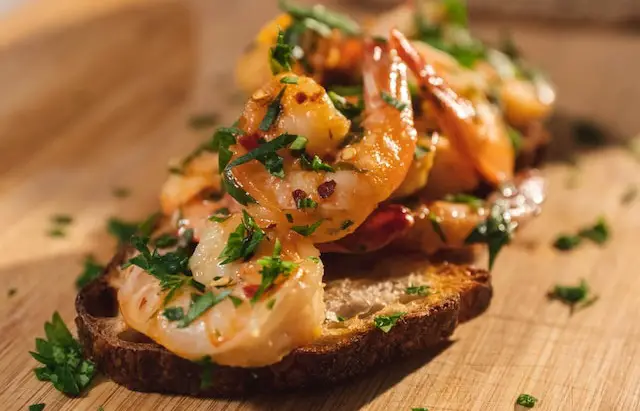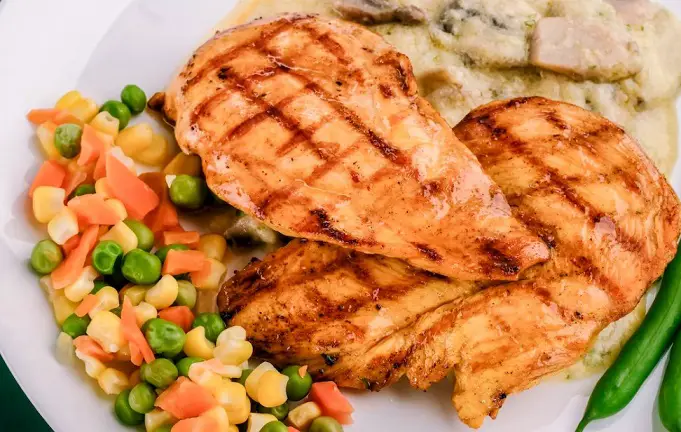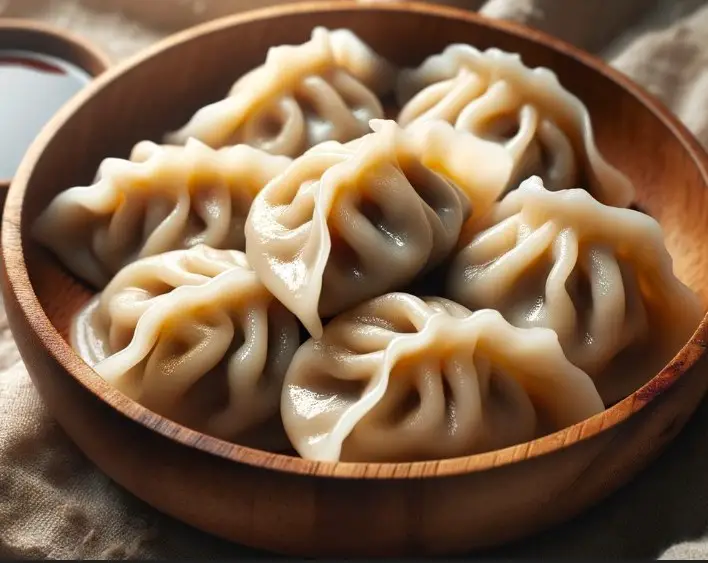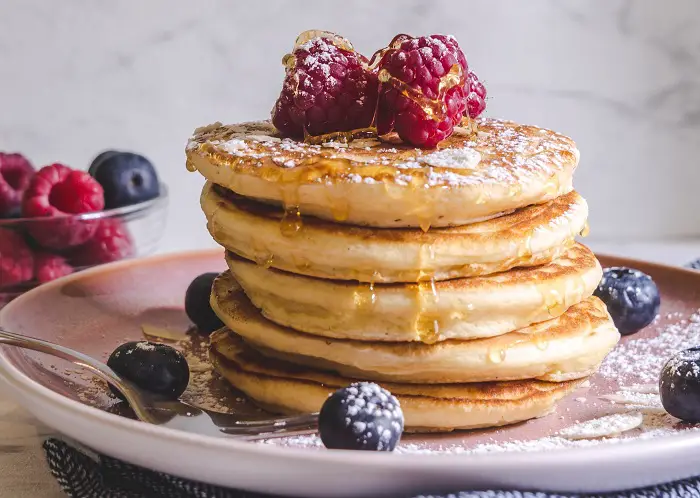The main culprit behind tough and chewy shrimp is overcooking. When shrimp are exposed to heat for too long, their protein structure contracts, leading to a rubbery texture. Much like other proteins, shrimp requires a delicate balance to ensure it’s cooked just right.
Causes of tough and chewy shrimp
1. Overcooking
At the heart of the rubbery shrimp debacle lies the tendency to overcook these delicate crustaceans. Shrimp, due to their thin flesh and high water content, cook extremely quickly. Yet, many people leave them on the heat for far longer than necessary, either out of fear of undercooking or simple inattention.
As the proteins in the shrimp heat up, they begin to coagulate, squeezing out the moisture and contracting the muscle fibers. If left on the heat for too long, this contraction becomes excessive, leading to the tough, rubbery texture we’re all keen to avoid.
A useful visual cue: if your shrimp has curled into a tight “9” or “O” shape, chances are it’s overcooked. What’s required is a gentle touch and a vigilant eye, ensuring that the shrimp is removed from the heat source at just the right moment.
2. Cooking from cold
Just as cooking steak straight from the refrigerator isn’t recommended, shrimp too can suffer from a sudden shift in temperature. When you cook shrimp that hasn’t been allowed to come to room temperature, the outside tends to cook much faster than the inside.
By the time the center reaches the desired temperature, the exterior is overdone, leading to a tough texture. Allowing shrimp to sit out for a short while, or even using a gentle defrosting method, can make a considerable difference in the end result.
3. Inconsistent batter
Frying is a popular method of preparing shrimp, and the batter plays a pivotal role in this process. A batter that isn’t consistent—having thicker and thinner spots—can cause varied cooking times for the shrimp encased within.
Parts with a thicker batter might not cook as quickly, leading some to leave the shrimp in the fryer for an extended period to ensure it’s done all the way through. This prolonged exposure to the hot oil often results in overcooked shrimp.
Achieving a uniform batter consistency, whether it’s through careful mixing or a thorough coating process, is crucial to ensure even cooking.
4. Improper oil temperature
This can be a sneaky culprit. Imagine dropping your shrimp into oil that isn’t quite hot enough. The batter, instead of quickly crisping up, absorbs the oil and becomes soggy. As you wait for the exterior to reach that perfect golden brown, the shrimp inside continues to cook. By the time the batter is right, the shrimp is overdone.
Maintaining the right oil temperature is critical. Too cold, and you risk the aforementioned scenario; too hot, and the outside crisps up (or even burns) before the inside is properly cooked. Using a thermometer or regularly testing the oil’s readiness can prevent this from happening.
How to Not Overcook Shrimp
1. Pan-fry ahead
The beauty of pan-frying is its quick and intense heat, which is especially conducive for delicate proteins like shrimp. Using a hot pan ensures that your shrimp will be exposed to the high temperature it needs to cook swiftly. Within just a few minutes, the shrimp will take on a deliciously seared exterior while retaining a juicy interior.
The key is not to leave them on for too long. An effective visual aid that many chefs swear by is the curling of the shrimp. When they take on a relaxed “c” shape, they’re usually perfectly cooked. But once they twist into a tight “9” curl, it’s an indication they’ve been on the heat for too long and are veering into overcooked territory.
2. Add at the end
When combining shrimp with other ingredients in dishes like pasta or stir-fries, it’s vital to remember their quick cooking time. Introducing shrimp towards the end of the cooking process allows them to soak up the flavors of the dish without risking overcooking.
As they cook, they’ll release their own juices into the mix, enhancing the overall flavor profile. And, since they’ll continue to cook in the residual heat of the dish, adding them near the conclusion ensures they remain tender and juicy.
3. Watch the color
One of the most straightforward indicators of a shrimp’s doneness is its color transformation. Raw shrimp possess a translucent, almost gelatinous appearance. As they cook, this translucence gives way to a vibrant pink hue.
Observing this change is a reliable way to ensure you’re pulling the shrimp off the heat at the right time. As soon as the majority of that translucent quality is gone, and the shrimp flaunts that bright pink color, it’s generally a sign that they’re done.
4. Mind the skewers
Grilling shrimp on skewers is a summer favorite, but it presents a unique challenge. On skewers, shrimp won’t curl in the same way they do when pan-frying. Thus, the curling method isn’t as effective. Instead, focus on the color change and the firmness to the touch.
Since they’re exposed directly to the flame or heat source, they’ll cook quickly. Regularly turning them ensures even cooking, and monitoring them closely will prevent them from lingering on the grill too long.
5. Taste test
Sometimes, the most effective method is the simplest. If you’re unsure about the doneness of your shrimp, just taste one. Not only does this give you a clear indication of its current state, but it also allows you to adjust seasoning if needed. Remember, the goal is a shrimp that’s tender, juicy, and flavorful. If what you taste aligns with this, you’re on the right track.
Tips for Cooking Shrimp
1. Dry them
Ensuring that your shrimp are thoroughly dry is one of the cornerstones of achieving that coveted sear, which is not just about aesthetics but also the taste. When a dry shrimp hit a hot pan, it will create a beautifully browned exterior and enhancing the shrimp’s natural sweetness.
However, if there’s moisture on the surface of the shrimp, it has to evaporate first, effectively steaming the shrimp before they can brown. By patting the shrimp dry with a paper towel, you remove excess surface moisture, allowing for that immediate and desirable sear, enhancing both flavor and texture.
2. Season well
Seasoning is the essence of any good dish. For shrimp, this is no exception. While they have their own delicate flavor, they can be elevated with the right seasoning. Simple salt can make a world of difference, amplifying the shrimp’s inherent taste.
For those wanting to go a step further, a combination of kosher salt and baking soda can be transformative. The salt naturally enhances flavor and helps to retain moisture, while baking soda raises the shrimp’s pH level, making them more resistant to overcooking and giving them a firmer, crunchier texture.
3. Butter, Garlic and Lemon
The synergy between shrimp, butter, garlic, and lemon is nothing short of culinary magic. Butter lends a rich, creamy note, while garlic provides a robust aroma and flavor. Lemon juice, with its citric tang, cuts through the richness, offering a refreshing counterpoint.
This combination ensures that every bite of the shrimp is a melody of flavors, with the natural sweetness of the shrimp shining through, complemented by the depth of the butter and garlic and the zest of the lemon.
4. Sauté with onions
Onions, when sautéed, develop a sweet caramelization that can serve as a flavorful base for many dishes. By starting your cooking process with onions, you lay down a flavorful foundation. When you add garlic, shrimp, and other spices into the mix, the dish becomes an orchestra of flavors. Finally, incorporating rice and water transforms this concoction into a wholesome meal. The rice absorbs the flavors from the shrimp and onions, ensuring that every spoonful is a flavorful burst.
5. Choose wild-caught
The debate between wild-caught and farm-raised shrimp often boils down to taste and texture. Wild-caught shrimp, nurtured in their natural habitat, tend to have a cleaner, brinier taste, reflecting the waters they’ve inhabited. Farm-raised shrimp, depending on their rearing conditions, can sometimes have a muddier taste, especially if they’ve been fed with fillers to plump them up. The wild variety often boasts a firmer texture, making them a delight to bite into.
6. Thaw and Devein
While the convenience of frozen shrimp is undeniable, it’s essential to handle them correctly to maintain their natural flavor and texture. Thawing them with cold running water is an effective method that ensures uniform defrosting without affecting the shrimp’s tenderness.
After they’re fully thawed, the next important step is to devein them. This process not only enhances their appearance but also improves their taste and overall mouthfeel.





